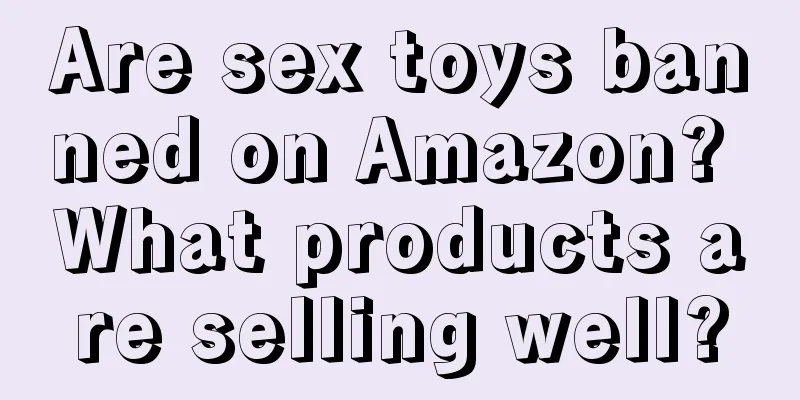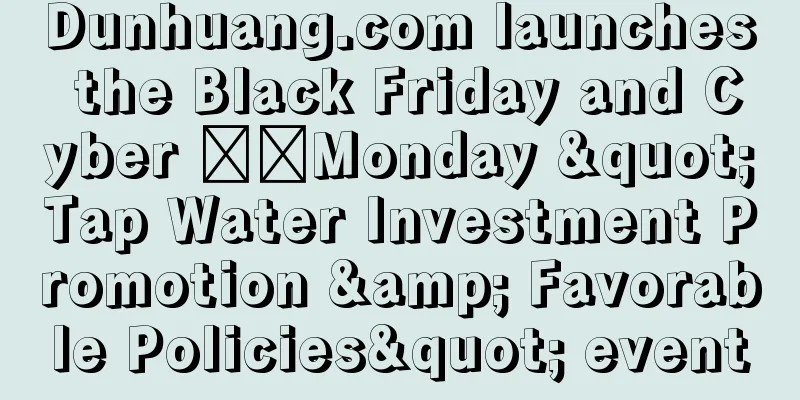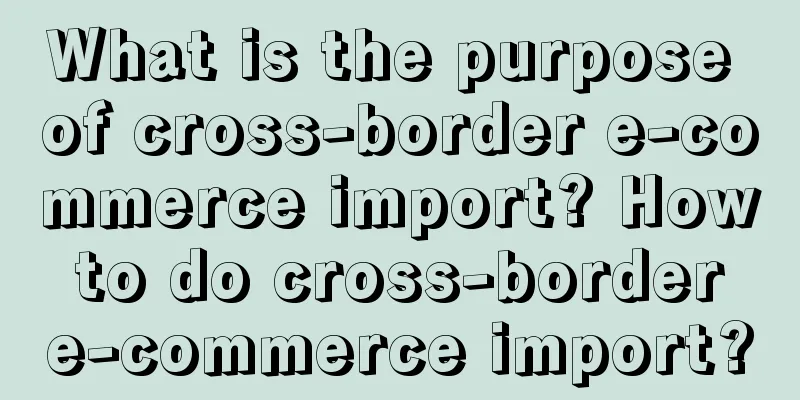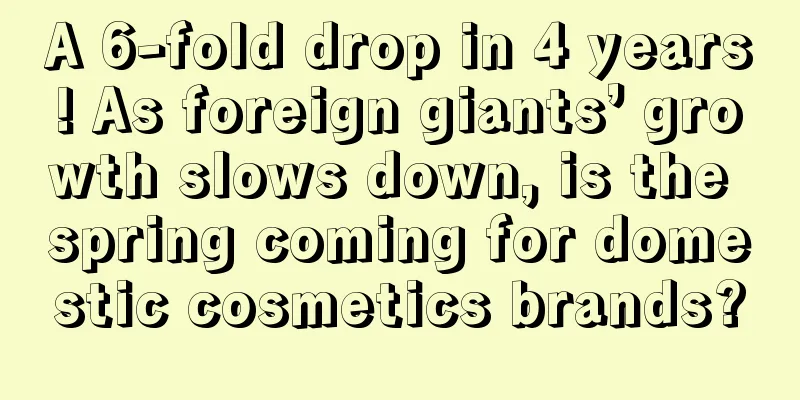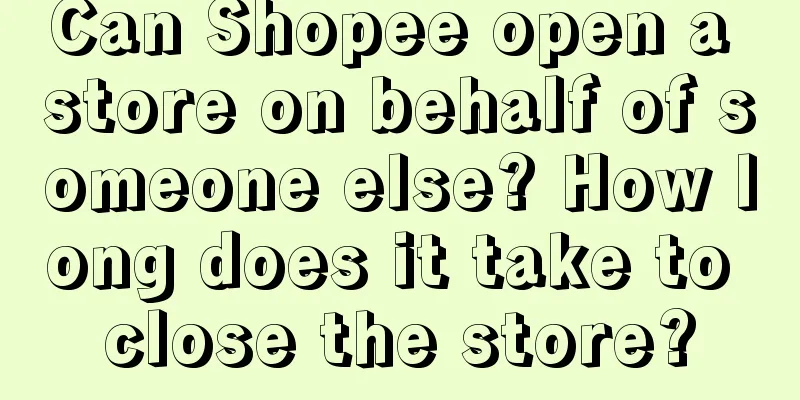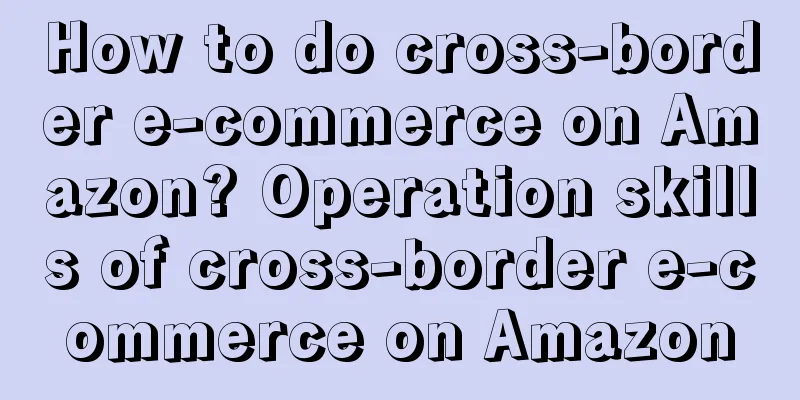Brand people's four-stage growth strategy (list)
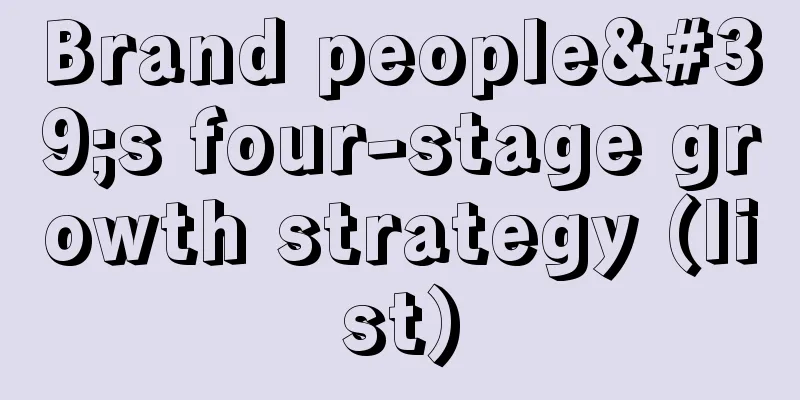
1.4 StagesPhase 1: 0-10 million, single-point single product, efficient conversion, traffic into sales Phase 2: 10 million to 100 million, product line expansion, channel penetration, and deep cultivation of user minds Phase 3: 100 million to 1 billion, cross-border endorsement, breaking circles and user retention Phase 4: 5 billion club, supply chain, category penetration, two players, one shake, one focus Phase 1: 0 to 1 VerificationSingle point breakthrough, single product penetration When new products and new brands first enter the market, the problem they face is not brand issues, but finding traffic and converting sales. By improving and eliminating differentiated selling points of single products and single points, we can gradually increase conversions and run through the content conversion path from traffic to efficiency.
The brand strategy at this stage is focused on potential consumers who are interested in the category. At the same time, because the new brand has relatively low awareness, it is necessary to convert consumers within the category with the help of category awareness or category bonus + unique differentiated selling points of the product. Focusing on the A2-A3 population, the interest value is increased through product differentiation content, and the interaction is strengthened to establish links, so as to promote orders and purchases. What is the 0 to 1 verification phase? That is: the product verification stage, the measurement standard is (conversion efficiency) sales. The biggest problems at this stage are: product and demand; product and content; product and media, channel adaptation issues, that is, investment and conversion efficiency issues. Usually, this stage starts with a single point or a single product, with a single point as a pilot and a single product as a channel and media penetration. During this stage, you need to have a brand mindset, but you definitely don’t want to build a brand immediately and in a big way. You still need to focus on the product and the sale of the product, solve the product sales problem, and achieve success in one fell swoop: effectively extract the unique and differentiated selling points of the product. In fact, 90% of products don’t sell well, not because of the product, but because of the compatibility of the product’s selling points with consumer demand. Before a product is launched on the market, it can have various functions and features. However, these are all illusions. If you don’t put the product on the real market, you will never know which ideas will bring you real results. (i.e.: cognitive challenges in the early stages of entrepreneurship) Starting from the function, find support in craftsmanship and raw materials. At this stage, the product selling points should be less empty and more practical - visible, tangible, somatosensory, and visual. It is not only about refining the selling points, but also considering the presentation form of the selling points. That is, the product and the content, the product and the media. Whether it is pictures and texts or short videos, can the selling points be brought out, and whether the expressiveness, penetration, and perception are strong. Single point breakthrough, concentrate resources on one media, one section under one media, one type of KOL under one section, and one keyword to penetrate. For example: Santonban focused on Xiachufang in the early stage; Perfect Diary focused on Xiaohongshu. If one method doesn't work, then all methods don't work. If one media method works, then basically 80% of the methods can be copied. It is very important to find the right demand adaptation point behind it. The rest is copying, amplification, and conversion rate indicators. For example, Swisse launched blood orange essence. In the first phase of Xiaohongshu, the focus was on the benefits of blood orange and why blood orange can supplement collagen, helping consumers understand the benefits of blood orange. The product was even named after its function: Blood Orange Collagen Liquid (rather than Blood Orange Essence).
It is important to note that the matching points and leverage points are: The problem of slow acceleration in the early stage is usually that the right matching point between product and demand is not found. Once the matching point is found correctly, the leverage point of content and media is found. Single point breakthrough, single product penetration, sales of 10 million or 50,000-100,000 orders can be repeatedly verified. Phase 2: 10-fold growth from 10 million to 100 millionKeywords: Enlarge the target population Expanding from A2/3 to A1, if the focus is still on A2/3 at this stage, it will inevitably lead to weak growth in the later stage. By targeting the A1 population and increasing advertising exposure through matrix placement, the base of the exposed population can be increased. Usually in the stage of 10 million to 100 million, most brands do not encounter traffic problems, but how to occupy the mind as soon as possible and solve the problem of how to cultivate the mind of users as early as possible. To this end, the second stage should gradually form the actions, routines, and methods of occupying the mind and cultivating the mind. If the first stage is mainly based on product + content + conversion, the second stage should start to take into account the actions of occupying the mind.
The law of quantity is the basic law, exposure, reach, interaction, conversion. In addition to reaching and converting existing users for the second time and stimulating repeat purchases, the core of increasing sales tenfold is to increase the initial value equivalent, expand the basic plate, expand the fundamentals, and open the gates at the source of traffic - why is the canal so clear? Because there is fresh water from the source. Only when the basic logic and path of reach, interaction and conversion have been implemented in the first stage, will we have a basic basis for judging the amplification actions in the second stage - there is no overtaking on the curve and not a single step missing. From 10 million to 100 million, the sales volume is 10 times faster than the original. How did we achieve this 10 times speed? There are two key points: 1) Product line expansion 2) Channel penetration This phase will enter the initial stage of the brand. In the 10 million to 100 million stage, the brand feeling will be gradually improved, and products will begin to be made like a brand. Industry public relations, SEO, press releases, brand media matrix, etc. will begin to be gradually improved, but the premise is that the product is hot and the sales growth of the product cannot stop.
1) Product expansion The expansion here is to extend the specifications and sizes of the original hot-selling products upwards and downwards. A, APro, A-. It is not to change the product items. The purpose is to stretch the consumer stratification through product expansion and meet the needs of consumers at different levels. Product expansion can also be done by product flavoring. Whether it is product expansion (A, APro, A-) or flavor extension, the consistency of the items must be maintained, or the basic tone of the brand must be maintained. 2) Channel penetration Channel penetration is not just about online and offline, but also about media penetration. Exposure is a hard indicator. It is best to choose a region with high potential, a city with high potential in a region with high potential, a channel with high potential in a city with high potential, and a terminal with high potential in a channel with high potential. What is high potential energy? For example: whether a restaurant is a big store, whether it is a chain, whether it ranks high on Dianping.com, and whether it can accept membership cards. A big store has higher potential energy than a small store, a chain has higher potential energy than a single store, a store ranked high on Dianping.com has higher potential energy than a store ranked low, and a store that can accept membership deposits has higher potential energy than a store that cannot accept membership deposits. Analyze each situation specifically. In essence, high potential energy can be felt. Once you stand at the terminal and take a look, the atmosphere and feeling are real. Therefore, without investigation, there is no right to speak - the answers are on the spot, and the questions are all wild imagination. Online, we start to catch the rhythm to get hot sales, category first, single product first. The value of first is to accumulate trust for the brand, 618, Double Eleven, New Year's Day.
For example, in the case of Xiaoxiandun, in 2018, it mainly focused on weight loss and skin care; in 2019, it enhanced the extension of the concept of pregnancy care and anti-aging, and at the same time increased the percentage of skin care recommendations from 28% to 45%. This means that the combination of skin care and function is effective. Focusing on the A2-A3 population, complete the user population portrait, and based on the A2-A3 user population portrait, iterate keywords and penetrate the population. After April 2019, the scenarios for Xiaoxiandun's advertising began to change. The proportion of "weight loss" scenarios decreased to 11%, and the proportion of "skin care" scenarios was the highest, accounting for more than 45% of the total. The proportion of "pregnancy care" and "freezing age" scenarios increased significantly, and the proportion of "health preservation" scenarios was still at the bottom. We used super-head KOLs to increase awareness, and used "weight loss", "skin care", "anti-aging", "health preservation", and "pregnancy care" as keywords for penetration. We gradually developed the core keywords: skin care as the main focus, health preservation as the foundation, pregnancy care, and anti-aging as the grass-planting strategy to penetrate the population. Phase 3: 100 million to 1 billionProduct structure + brand pull This stage is also 10 times, the same question is where does the 10 times come from? 1) Online + Offline 2) Breaking the circle and attracting new users 3) Move to a higher level The core is to rely on the pull of the brand to drive sales growth. In other words, at this stage, simply talking about products, traffic, and conversion is not enough to support sales growth. It is necessary to combine brand, product, traffic, and content. Only at this stage can we enter the comprehensive stage of true integration of product, effect and sales. Brand actions extend from brand and category groups to interest groups, attracting interested groups through top-tier product promotion + celebrity endorsements + brand crossover + advertising and public relations, enlarging traffic entrances, and gradually transitioning from A2-A3 groups to A1 and O consumer groups. The purpose of crossover and brand co-branding is to break the boundaries of categories, and the core of crossover is also to attract new traffic. At this stage, the amplification of brand actions will bring more general traffic. Therefore, the integration of brand, effect and sales will enter a critical stage. If the integration of brand, effect and sales is not achieved at this stage, the traffic brought by the brand's cross-border, joint, advertising and public relations will not be converted into sales growth.
The focus is on breaking the circle and attracting new customers among the O and A1 groups:
From "arithmetic growth" to "exponential growth", when a brand reaches a certain stage of growth, it will encounter diminishing marginal utility. There is often only one reason, which is also a fundamental lesson that is often overlooked, that is, insufficient brand power. In the entire brand life cycle, and only at this stage, brand power becomes extremely important. In particular, when growth is sluggish, we need to increase new customers externally and break through the circle; internally, we need to drive repeat purchases and improve conversions. Attracting new customers is a constant action, and breaking through the circle is the goal. From brand users, to competitor users, to category users, to cross-category users, and finally to scenario users. Only by constantly breaking through the circle can we maintain growth, especially in the stage of crossing the chasm; this is even more true for achieving exponential growth - traffic, breaking the circle, conversion, operation, and sedimentation of mind. Based on consumer portrait labels and sales base data: define the brand's core portrait labels and lock in the A4-A5 core strategic groups: emerging white-collar workers, senior middle-class, sophisticated mothers, small town youth, Gen Z (Generation Z), urban silver-haired people, small town middle-aged and elderly people, and urban blue-collar workers. Based on the A4-A5 portraits, attract new user circles to increase traffic. That is: the right people (user portraits), multiple levels (5A stratification), multi-dimensional reach (off-site, on-site) 1) Based on the insights of brand 5A people, clear user portraits 2) Produce insight-based crowds and break-circle strategies 3) Implement closed loop through operation Through the analysis of the 5A of the population and brand users, we can clearly correspond the strategies to the different circles of people. The core of breaking the circle is to attract users other than A4-A5 types, and guide users to gradually settle into A2-A3 users through content, so as to prepare for traffic accumulation for sales conversion. According to the 5A population level, a reach combination of "brand advertising + content seeding + paid traffic" is formulated to achieve content reach across touchpoints/frequencies. Off-site: Based on data portraits, select brand advertising to reach the O-A1 population, stimulate conversion of the A1-3 population through short video influencers, and then cooperate with bidding advertising to convert them into the A4 population. On the site: Super Interactive City and Brand Special Show expose the "O-A1 group" (targeting the opportunity group) and reach new users. Use the through train to reach the "A2-3 group" with shopping intentions, stimulate users and deepen their behavior, use Diamond Exhibition to reach the "A3-A4 group" (interest group, purchase group), and use Product Sales to reach the "A4-A5 group" (purchase group, loyal group). Phase 4: 5 billion club, building a moatLong-term operation + long-term value Through long-term operations and content output, the brand improves the ROI of O-A1-A3-A4, strengthens the continuous reach of A5 super users, and drives the long-term compound value of the brand. At the organizational level, we must take into account all aspects, from products to marketing, channels, and finally supply chain, and even talent management and financial management, in order to build a high wall and consolidate the moat. At the brand level, we must have multiple dimensions, multiple frequencies, and multiple touches to build a full-link brand growth from advertising to content marketing to scenarios, not only online, but also including the penetration of offline channels. 1-5 billion, it is time to build a moat. From products, to marketing, to channels, and finally to the supply chain, and even including talent management and financial management, all aspects must be taken into consideration to build a high wall and consolidate the moat. The method of spending money to buy traffic in exchange for sales is acceptable in the early stages of a brand. However, if the brand still relies on traffic in exchange for sales in the middle and late stages, the brand will have to work for KOLs and Internet celebrities. In essence, KOLs and Internet celebrities are channels, not brands themselves. Selling goods and building brands are two different things. If users trust KOLs, not brands. This means that the company's brand has not really established the mind and brand awareness among the target population. Once the consumer's mind is saturated, it will be very difficult to break into it again - the key to seizing the opportunity is the window period of the category. Once consumers are overloaded with a certain type of information, it is difficult for them to remember the same type of information. For example, in 2017, Neiwai began to invest heavily in expanding offline channels. It is said that the first shopping mall Liu Xiaolu chose was the Shanghai Jing'an Kerry Center, and "Neiwai's first store must be opened in the core area of Shanghai." Neiwai waited for a year for this location. In the three years from 2017 to 2020, Neiwai has 110 retail experience stores in 29 first- and second-tier cities across the country, and has strategic cooperation with first-tier owners such as Kerry, Sun Hung Kai, Swire, Hang Lung, and China Resources. On the one hand, choosing a high-potential business district for the location of offline stores can reflect the brand image and effectively form brand endorsement. On the other hand, as traffic becomes more and more expensive, offline channels can bring brands greater room for category expansion and more development opportunities. With the help of the layout of offline channels, Neiwai has gradually expanded from underwear to home casual wear, dance sports and home products.
The integration of brand, effect and sales should not be just a slogan, but a set of brand combination strategies. This strategy is the brand stage strategy for 5A people at different stages of brand development. Author: Houshan Keju, Source: WeChat public account “Lao Gao Business and Brand”. |
<<: Uncovering the secrets of data management in the subsidy war
>>: Fang Wenshan talked about how to write advertisements
Recommend
In the fur live broadcast room, we can see the confidence of women's clothing e-commerce
Explore the new realm of women's clothing e-co...
How much is the appropriate registered capital for an Amazon business license? How much is the appropriate registered capital for an individual?
For merchants who want to do business on Amazon, r...
I was cheated by a low-priced tour group in a live broadcast room: I was checked out of a five-star hotel halfway through my trip, and I only received 500 yuan in compensation after two months of rights protection
Selling travel products in live broadcast rooms ha...
How to build a content evaluation system for entertainment platforms?
Editor's note: Nowadays, content is an importa...
From "going to Zibo to catch the barbecue" to "going to Tianjin to catch the dancing", why hasn't Tianjin become the next Zibo?
This article focuses on the phenomenon of diving u...
How to advertise on eBay? What are the methods?
eBay is a popular cross-border e-commerce platform...
Once again, I was touched by the fireworks copywriting of RT-Mart
The culture of pairing is all the rage, and brands...
Tea and coffee shops are eyeing young people’s breakfast
Milk tea and coffee are the "life-saving reme...
Can I be arrested if I only collect money but don't ship the goods? Is not shipping considered a scam?
In foreign trade business, some people may conside...
Xianyu launches "seafood perfume"; 1 point gives away wooden fish; Adidas uses shoe boxes as shoes... This is how you should do April Fools' Day marketing!
April Fools' Day is a great opportunity for br...
New and old players are accelerating forward, how do new ways of playing on social platforms "impact" local life?
Marketing through social media is a new trend in t...
What is the root cause of the obstacles to action?
The article summarizes two ways of thinking: defen...
What is the difference between THC charges and terminal charges? What are the ocean freight surcharges?
When friends open a store on a cross-border e-comm...
What is the name of the Shopee coupon? What are the common settings?
Shopee sellers can set up store coupons, which wil...
[Experience Frontline] How does customer experience help companies capture customers’ decision-making minds?
The discussion of customer experience and customer...
